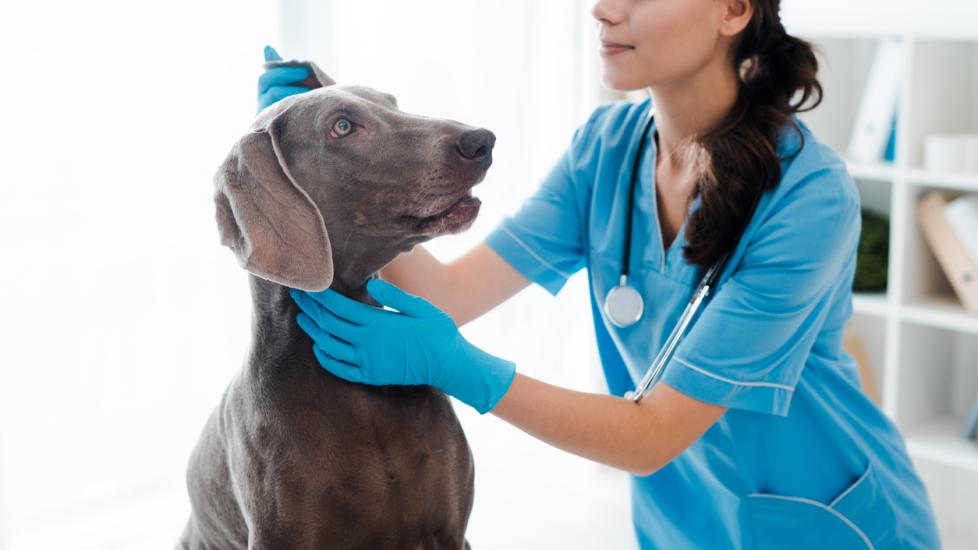Title: Understanding Vestibular Syndrome and How to Care for Your Affected Dog
Introduction:
Living with a canine companion is often filled with joy, but it’s not without its challenges. One such challenge that many dog owners face is vestibular disease or syndrome, which affects the balance and coordination of their beloved pets. This condition can be distressing both for dogs and their human caregivers, as it significantly impacts quality of life. In this article, we delve into what vestibular syndrome is, how it manifests, potential causes, diagnosis, treatment options, and most importantly, how you can provide care for your affected furry friend during this trying time.
Understanding Vestibular Syndrome:
Vestibular syndrome refers to a sudden onset of symptoms related to the inner ear or central nervous system affecting balance and coordination. It commonly occurs in older dogs due to degenerative changes within these systems but may also affect younger animals from various underlying conditions. Symptoms include head tilt, nystagmus (involuntary eye movements), loss of balance, disorientation, vomiting, and sometimes, falling over to one side. The severity of these signs can vary widely between individual cases.
Causes:
While age-related degeneration is common, other factors could contribute to vestibular syndrome including idiopathic reasons (unknown cause), infections, tumors, brain disorders like stroke or meningitis, and certain medications or toxins ingested by the pet. A thorough examination by a veterinarian will help identify the root cause if possible.
Diagnosis:
To diagnose vestibular syndrome accurately, vets rely on clinical observation combined with blood tests, imaging techniques such as X-rays or MRI scans, and sometimes CSF analysis. These tools aid in ruling out other medical issues that might present similarly while providing insight into the extent of damage and best course of treatment moving forward.
Treatment:
The goal of treating vestibular syndrome is twofold—to manage symptoms effectively and support overall well-being until the body heals itself where possible. Medications are prescribed for nausea control, dizziness relief, and in some instances, antibiotics if an infection is detected. Physical therapy sessions focusing on balance exercises may also be recommended once acute symptoms have subsided to help retrain the dog’s muscles and improve mobility.
Care at Home:
As an owner caring for a dog experiencing vestibular syndrome, there are several steps you can take to create a supportive environment and assist them through recovery:
- Create a Safe Space: Ensure your home is free from tripping hazards and secure any loose items that could potentially injure your dog if they lose their footing. Provide plenty of soft bedding areas for rest.
- Regulate Diet: Some dogs may experience temporary appetite changes; offer small meals frequently throughout the day rather than larger ones to encourage intake. Stay hydrated with easy access to fresh water.
- Keep Them Clean: Due to decreased coordination, bathing may become difficult; use wipes or gentle sponges instead when necessary. Monitor elimination habits closely since accidents might occur due to unsteady legs.
- Encourage Movement: Gentle leash walks around familiar environments can help stimulate movement without overwhelming them physically. Avoid new or overly stimulating surroundings initially.
- Positive Reinforcement Training: Simple commands like “stay” and “sit” can help build confidence gradually as balance improves; reward every attempt positively even if unsuccessful initially.
- Monitor Progress: Work closely with your vet by keeping detailed notes about your dog’s daily activities, mood swings, improvements seen so far – all valuable information for future appointments.
- Consistent Routine: Pets feel more secure when things remain predictable; maintain regular feeding times, play periods, and bedtime schedules wherever feasible despite additional caregiving duties now required.
Conclusion:
Caring for a dog suffering from vestibular syndrome requires patience, understanding, and dedication on behalf of the caregiver just as much as it does veterinary expertise. By being attentive to your pet’s needs during this period and following prescribed treatments diligently alongside lifestyle adjustments mentioned above – together we can strive towards helping our four-legged friends regain stability once again!
